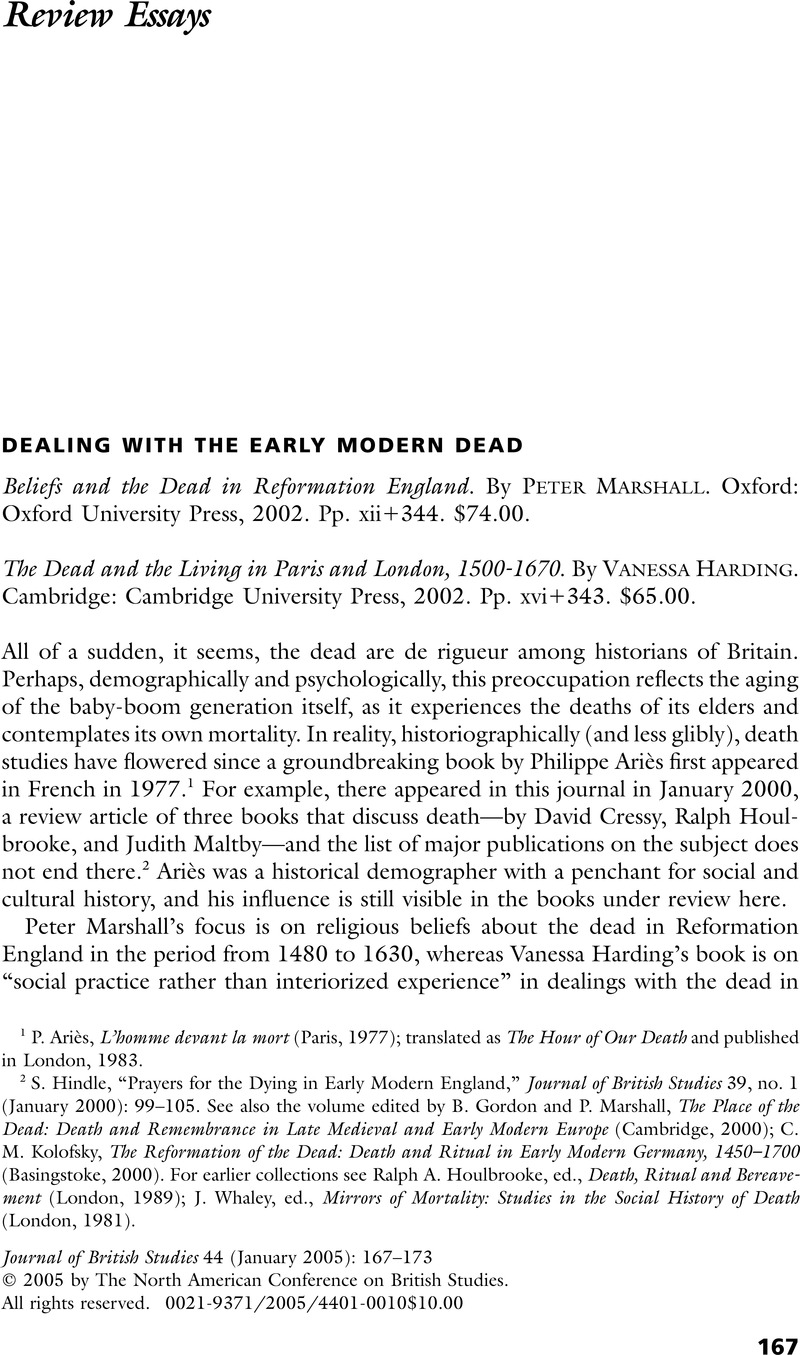No CrossRef data available.
Article contents
Dealing with the Early Modern Dead
Published online by Cambridge University Press: 21 December 2012
Abstract

- Type
- Review Essays
- Information
- Copyright
- Copyright © North American Conference of British Studies 2005
References
1 Ariès, P., L’homme devant la mort (Paris, 1977)Google Scholar; translated as The Hour of Our Death and published in London, 1983.
2 Hindle, S., “Prayers for the Dying in Early Modern England,” Journal of British Studies 39, no. 1 (January 2000): 99–105CrossRefGoogle Scholar. See also the volume edited by Gordon, B. and Marshall, P., The Place of the Dead: Death and Remembrance in Late Medieval and Early Modern Europe (Cambridge, 2000)Google Scholar; Kolofsky, C. M., The Reformation of the Dead: Death and Ritual in Early Modern Germany, 1450–1700 (Basingstoke, 2000)CrossRefGoogle Scholar. For earlier collections see Houlbrooke, Ralph A., ed., Death, Ritual and Bereavement (London, 1989)Google Scholar; Whaley, J., ed., Mirrors of Mortality: Studies in the Social History of Death (London, 1981)Google Scholar.
3 See also Slack, Paul, “Metropolitan Government in Crisis: The Response to the Plague,” in The Making of the Metropolis: London, 1500–1700, ed. Beier, A. L. and Finlay, Roger A. (London, 1986), p. 62Google Scholar.
4 Duffy, E., The Stripping of the Altars: Traditional Religion in England, 1400–1580 (New Haven, Conn., 1992), chaps. 9–10Google Scholar.




